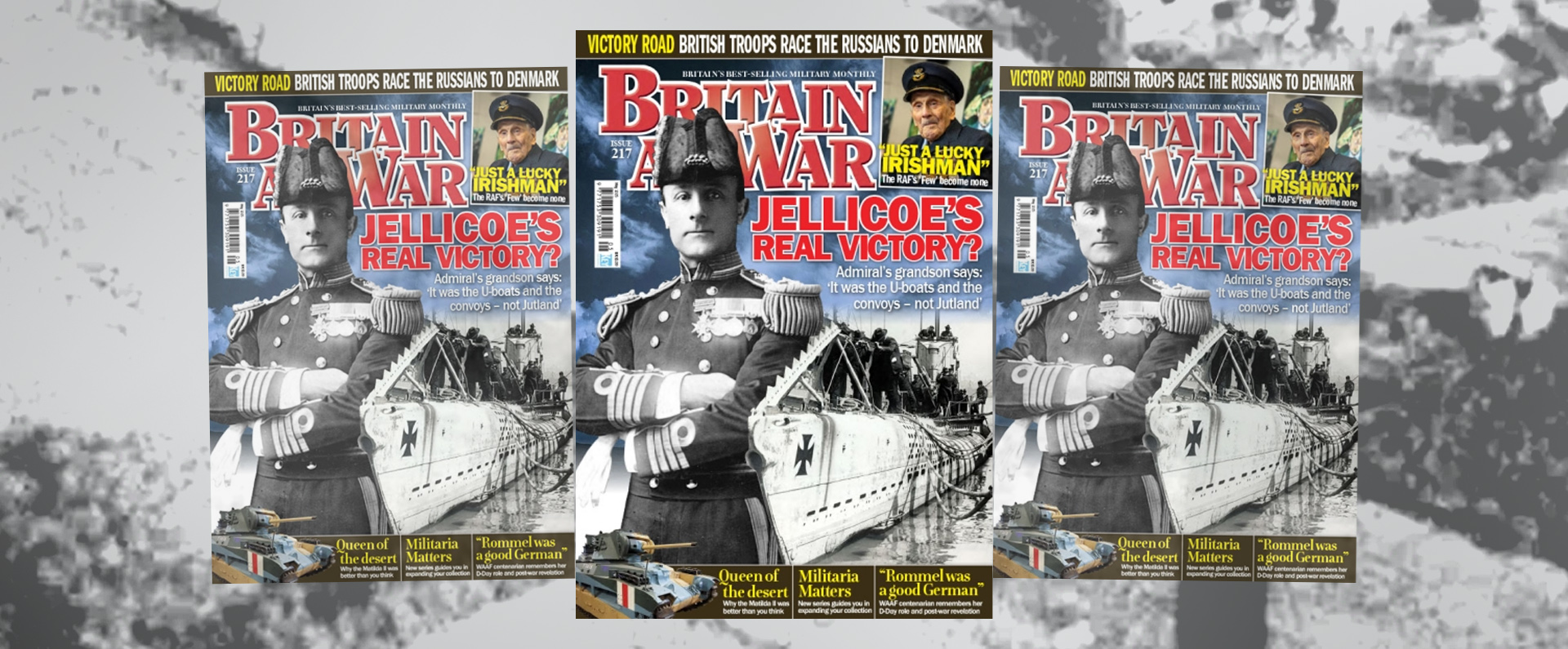
The Veterans’ Transition Review, published in February 2014, made a number of recommendations concerning education and training, resettlement and employment, housing, health, welfare and the third sector, finance, advocacy and the Armed Forces covenant, information provision, and reservists. I agreed to provide a follow-up report after one year to comment on the progress being made in implementing these recommendations. I subsequently decided to delay the report until after the award of the new contract for the Career Transition Partnership, since it is such an integral part of the process.
Following the delivery of my report, the Ministry of Defence produced a grid bringing together my recommendations and the action plans for their delivery, and has kept me informed of developments. I have also stayed in touch with other interested parties, and have continued to receive input from individuals relating their experience of the transition process. I also note that Eric Fraser, the Scottish Veterans Commissioner, has produced a welcome study, Transition In Scotland, which takes many of the themes discussed in my Review and examines how they apply in the particular circumstances of Scotland.
A great deal of work has been done in the last sixteen months, and more is in hand. All parties – the MOD and other local and national government bodies, businesses, the third sector, the academic world and the Forces themselves – are contributing and some progress has been made. Nevertheless, in some areas I think the pace of change is not as brisk as I had hoped.
During my discussions with Ministers I sensed an understanding of the importance of transition, in particular the relationship between good resettlement and its impact on recruitment, reputation, retention and the Reserves. However, this does not seem to be fully reflected in operational plans. Submissions to me indicate that the new CTP contract, for example, which does have the minor improvements I mention later, is otherwise similar to its predecessor and a great opportunity has been lost.
I understand the complexities involved in some of the proposals, such as the need to incorporate an individual’s Personal Development Plan into the wider career restructuring that will take another two years to take effect. Even so, there are people leaving the Services today under conditions that are essentially the same as those that prevailed at the time of my review, and I am eager for improvements to be made as soon as possible.
Rather than comment on each of my detailed recommendations I will review progress under four broader headings: Information, Career Transition, The Third Sector, and Northern Ireland.
Information
The VTR concluded that although an abundance of information is available to Service leavers, too much of it is hard to find, poorly presented, confusing and even misleading. In particular, it is hard for those who need help to find it quickly. Since the Review was published I have had a steady stream of veterans coming to me with complaints about a wide range of problems. In nearly every case, information was the central problem: either the Service leaver, or a service provider trying to help them, had needed accurate information and not found it.
This suggests there is some way to go in simplifying and clarifying information provision and reinforces my view that getting this right will be the most cost-effective way to improve the circumstances of Service leavers, and will make the biggest difference. Though there are good intentions in this regard, they have not yet been converted into visible action.
For example, those we consulted during my Review repeatedly stressed the need for information on housing to be given in time for Service personnel to prepare themselves – yet the action taken has been to ensure that Career Transition Partnership workshops, which happen near the end of a Service career, include the housing package. Such preparation should be brought forward, not as an option that Service personnel can look at if they wish, but pushed actively. Also on the question of housing, I suggested that the MOD should commission a comprehensive survey of local authorities to establish a detailed picture of the conditions for the allocation of social housing in each area. The MOD has responded with an answer to a slightly different question, offering a list of waiting lists. I understand, however, that the Forces in Mind Trust (FiMT) along with Stoll and Riverside commissioned research which does answer the question for single veterans and should be taken on and exploited by the MOD. Some organisations working in this field are well ahead of the MOD.
I also urge Veterans UK and the charity sector to redouble their efforts in the information field. The Veterans UK website was much improved during its recent refresh but it still has the formal feel of an official government website. I question whether a veteran in a state of crisis can easily find their way to a solution. However, I believe that with the right input this could be turned into a world-class system to support our veterans.
Facilitating mobile access will be crucial to achieving this. Right Management report a 300% increase in Service leavers engaging with the Career Transition Partnership through mobile technology. This will be the preferred means of communication for many or most young people. Progress in this field need not be held back by lack of funds: I suggest that this would be a much better use of LIBOR funding, and would achieve better value for money, than its current scattered allocation to various charities. The MOD’s response to this is that Cabinet Office guidelines state that a need has to be established before an app can be developed. This highlights for me the weakness in its communications strategy in this field and a disconnection with the way young people communicate. Connections are created by the tools; nobody needed Facebook or Twitter before they were developed.
My own research under the title The Armed Forces in Society suggested that the public had a number of misconceptions about Service life and believed that most Service personnel were in some way damaged by their careers. I recommended that the government should be more pro-active in countering these misconception and the MOD’s Communications Directorate responded by saying this what they do. I have to say that I have seen no evidence of changes over the last year that will enable the Directorate to achieve this goal more effectively.
There is some good news in the information area, however. I am aware that Right Management in delivering the new CTP contract intends to provide information earlier, and joined up across Early Service Leavers, the Wounded, Injured and Sick, and those having served a full career. This single uniform approach is welcome.
In addition, the Veterans Research Hub project is well on its way, jointly funded by myself and the FiMT, and to be hosted at Anglia Ruskin University. As I concluded in the Review, an important part of the solution to the information problem is for policy makers, the media and others to have a single, reliable source of the best available research concerning veterans and Service leavers.
One area in which I believe early research would be useful is that of Early Service Leavers. We know that this group is the most vulnerable of all Service leavers; the few who go on to have financial problems, or to be unemployed, homeless, or involved in substance abuse, are usually members of this group. During the course of my Review it was often pointed out that these problems tend to be the result of predispositions or preconditions – that these young men or women were in trouble before they joined up and did not serve long enough to grow out of these problems. This seems to me a reasonable understanding, but without underpinning research this could be judged to be an excuse. Further work in this area would increase our understanding, help to persuade some that these outcomes are not a result of having served in the Forces, and help in the selection process, thus reducing the fall-out rate.
One of the issues that came to light during my Review was that provision was often uneven across the country. It was therefore important for examples of best practice to be highlighted, as I tried to do in my report. Since then I have become aware of more local initiatives that could usefully be adopted more widely. Doncaster Council, for example, has appointed a Veterans Support Officer who publicises support available and brings everything together. I believe much could be gained at little cost by establishing an information hub where such good practice could be highlighted and exchanged. The online Veterans World magazine, published by the VWS, is a good start, but few seem to know about it and more could be done.
Career Transition
The new CTP will take some time to effect even the marginal changes that have been incorporated. For most Service leavers it will look the same as it does today. I do welcome the plan for a single common process for all Service leavers, however long they have served and whether or not they are fully fit, though this will probably benefit the contractor more that the individual. The aspiration to manage the whole process through a single IT platform is also sound (once again, the contractor will benefit most), and I am pleased to see the switch in emphasis from job finding to early engagement with employers, establishing long-term relationships. The inclusion of trials for spouses and Reservists to benefit from the scheme is also helpful. What has been lost is the opportunity to involve Service personnel in longer term planning and preparation earlier in their careers.
The establishment of the Defence Relationship Management organisation, now up and running, is another positive development. This should eliminate confusion and reduce employer fatigue resulting from many separate approaches. The view I have heard from employers and the Third Sector, however, is that it is fully focussed on dealing with the severe Reservist recruitment crisis and that it will do little for Service leavers.
The DRM now has nearly 600 Corporate Covenants signed with businesses, and nearly all local authorities in the UK have signed the Community Covenant. Though this is good news, I have some concerns as to how these will be kept alive, and whether signatures will translate into positive action. I recommend that the Covenant Reference Group consider how momentum can be maintained.
The Third Sector
I was not surprised that some of my recommendations caused some discomfort in the Third Sector, not least the suggestion that Armed Forces charities should work more closely together. Despite this early wariness, I am pleased to say that more progress has been made than I expected; this is largely due to the unifying effect of the work of the Confederation of Service Charities (Cobseo) and the FiMT.
Cobseo has encouraged collaboration and co-operation, establishing new “clusters” to bring charities together on themes that were previously uncoordinated. Its initiative to create a more joined-up approach to communications is also beginning to bear fruit. However, the recruitment of a communications officer, though welcome, is only a small step and I continue to believe Cobseo merits more horsepower. Being governed and funded by the charities it seeks to help through coordinating activity is in some ways a good model: it moves forward with active, collective, support.
This also has a significant disadvantage, namely the uncertainty of funding: this can be used as a negative lever. I recommend that Cobseo’s core funding should come as a grant from public funds – another obvious good use of LIBOR funding – the balance being made up from subscriptions. This will de-stress the whole process and allow everybody to get on with the real business.
The FiMT’s impact is found through the research it commissions. This research is well targeted and its findings cannot be ignored. This helps ensure that services are directed where there is real need.
Cobseo and FiMT are together running two initiatives which I supported in my Review. The first is the online publication of the Directory of Armed Forces Charities, listing all the organisations in the sector and detailing the services they provide. Working with the National Council for Voluntary Organisations they are also developing an accreditation structure, the first of its kind in the world, which will do much to improve charity performance and help ensure public and private funds available to support Service leavers and veterans are used as effectively as possible.
The second initiative is the development of a contact centre. Further research since the publication of the VTR suggests that a single contact centre for the sector, with a single telephone number, may not be the best solution. At the same time, a way must be found for those who need help to find it as simply as possible. Cobseo is working with Veterans UK to explore the possibility of a joint approach.
One associated issue is that of LIBOR funding. Supporting veterans is an excellent and worthy use of this money, but I question whether allocating these funds to Armed Forces charities is always the best approach (indeed I am aware of some grants that have raised eyebrows). I suggested above that some of this money could transform the way we inform and help those in need via the Veterans UK website. We should not hesitate to use this money at the centre when it is deemed that this could make a difference. I understand that a new allocation process is being put in place involving the Covenant Reference Group, Cobseo and a professional grant giving body. I hope this has the authority to take a broader and wiser view and I will watch this development closely over the next year.
Welfare
In my report I noted that the Veterans Welfare Service was due to be absorbed into the Defence Business Service. Although some concerns had been voiced to my Review team I felt at the time that it seemed to be a reasonable move. Since then I understand that the DBS might now be privatised and that there are greater concerns over this. I am not against privatisation in principle but wonder if this component of the DBS will sit well within a commercial contract. The VWS is important to veterans in need and behaves more like a charity than a government agency in its attitude, which is an important part of its success. I wonder if there may not be a better solution, such as removing the VWS from the DBS and offering the tender to one or a consortium of charities who themselves would develop a relationship with the remainder of the outsourced DBS. Either way, it seems to me that an audit, or a review, of the VWS would be very helpful at this moment of change, and urgently. Throughout the past three years I have believed that the VWS has far more potential than has been realised and it is time to release it rather than lose it.
Northern Ireland
One of my recommendations the Government did not accept was the amendment of Section 75 of the Northern Ireland Act to enable veterans and their needs to be recognised by those who provide services for them and implement the Armed Forces Covenant. I understand the difficulties such a change might present the government though it does expose a contradiction. The Act has already been amended in favour of Travellers and it does seem to me an anomaly that they get preferential treatment while our veterans do not. At the very least, it suggests that there is no reason in principle why the Act cannot be changed. If the necessary amendments cannot be made for political reasons, other measures need to be put in place to support our veterans in Northern Ireland; it is the one place in the UK where the Armed Forces Covenant has not been applied and veterans are at a disadvantage. I understand that the FiMT has work underway to establish, in effect, the level of this disadvantage and hope that the results are taken seriously. However, I would be concerned if waiting for this research is used as an excuse to do nothing now.
Definition of a Veteran
Though not a formal part of my remit, I suggested in my Review the definition of a veteran needs to be revisited. The current official definition is anyone who has completed one day in the Forces. Over the past year I have not met anyone outside government who agrees with this definition; the consensus seems to be that only those who complete basic training merit the title, and I agree. The current definition lessens the credibility of the term. I believe it should be examined and reviewed.
Conclusion
My first follow-up report records considerable progress with much work in hand, but with the real benefits still downstream. Much more needs to be done on the provision of good information in particular, and I recommend that a very active and ambitious approach is taken. The FiMT is producing a good deal of helpful research in this field and I intend to work with them in detail to monitor developments. I hope that in a year’s time many of the planned changes, and the ideas I have suggested in this update, will have taken effect and we will see tangible improvements to the benefit of Service leavers and veterans.


